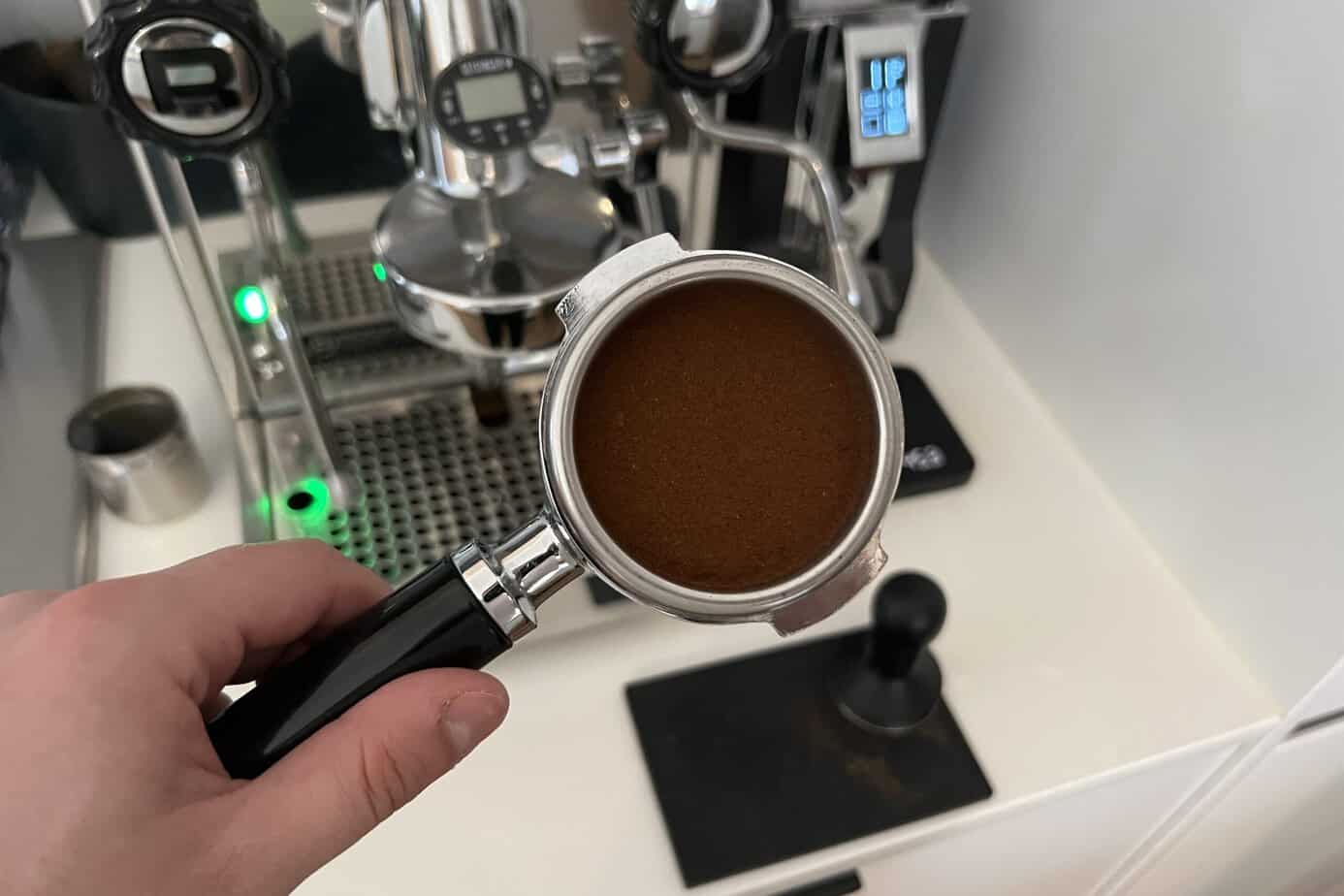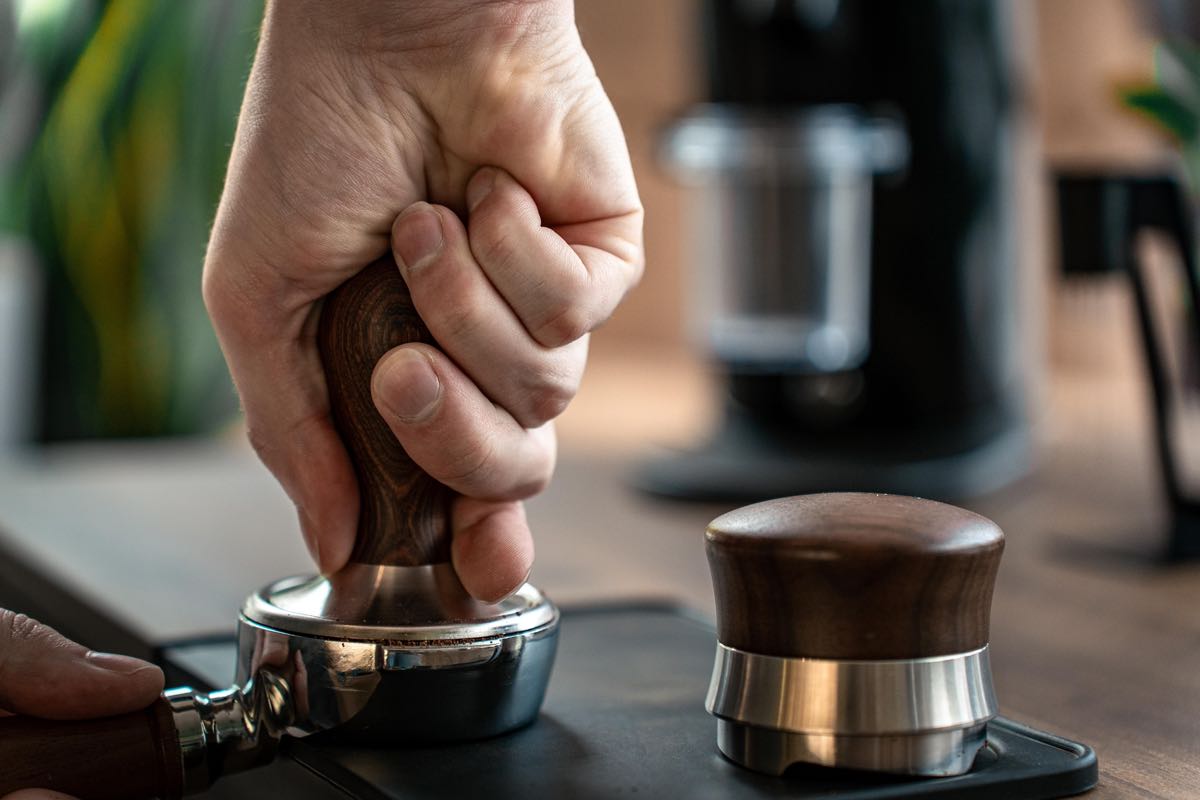Diving into the world of home espresso-making can be an exciting yet challenging experience. I vividly remember my early attempts: I would press down on the tamper with all my might, mistakenly thinking that maximum force equated to better coffee. The result? A bitter, over-extracted espresso that was far from the smooth, flavorful shot I envisioned. Over time, I discovered that tamping is less about brute strength and more about precision and consistency. Whether you're just starting or looking to improve your skills, understanding the correct tamping technique is key to crafting the perfect espresso shot. Learn everything about this innovative coffee machine in our DeLonghi Eletta Explore Espresso Machine with Cold Brew review

The Role of Tamping in Espresso Crafting
Tamping is an essential step in preparing espresso. By compacting the coffee grounds into a uniform layer, it ensures even water flow during the brewing process. If tamping is done poorly, air pockets may form, causing "channeling," where water rushes through certain areas of the coffee bed, resulting in an uneven extraction and a subpar shot.
A well-executed tamp promotes balanced water distribution, allowing for optimal flavor extraction. Without it, water may flow too quickly, leading to under-extraction and a sour-tasting espresso. Dive into the features and performance in our DeLonghi Dinamica Automatic Coffee & Espresso Machine review
Finding the Right Balance: How Much Pressure to Use
Many espresso guides suggest applying approximately 30 pounds (13.6 kg) of pressure when tamping. However, this number is merely a reference point. For home baristas, the focus should be on maintaining a consistent technique rather than adhering strictly to this measurement. Your goal is to press the tamper until the grounds are evenly compacted and firm. Explore the versatility of this model in our DeLonghi Magnifica Evo Espresso Machine with Frother review
Applying excessive force won’t improve your espresso and may lead to over-extraction, resulting in a bitter taste. The key is to use steady, even pressure while ensuring the tamper is level throughout the process.
Mastering the Art of Tamping: A Step-by-Step Process
Follow these simple steps to achieve consistent tamping for great espresso:
Distribute Coffee Grounds Evenly
Before tamping, ensure the coffee grounds are spread uniformly in the portafilter. Uneven distribution can lead to inconsistent tamping and channeling. A gentle tap of the portafilter or the use of a coffee distribution tool can help level the grounds. Discover the benefits and features of this machine in our DeLonghi Magnifica Evo review
Hold the Tamper Properly
Grip the tamper with a straight wrist and position your elbow at a 90-degree angle. This stance allows for even pressure application without straining. Place three fingers around the tamper's handle, using your thumb and index finger to guide and stabilize it.
Apply Steady Pressure
Press the tamper down until you feel resistance, ensuring the grounds are firmly compacted. Once compacted, stop—additional pressure won’t enhance the shot and could result in over-extraction. Find out why this model stands out in our DeLonghi Magnifica S review
Maintain Consistency
Rather than obsessing over exact pressure levels, focus on applying the same pressure each time you tamp. Consistency is crucial for achieving repeatable, high-quality results.
Use a Stable Surface
A tamping mat or station provides stability and protects your countertop. It also keeps the portafilter steady, making it easier to achieve an even tamp.
Avoiding Common Tamping Mistakes
Steer clear of these frequent errors to improve your espresso:
Uneven Tamping
Failing to keep the tamper level can cause water to flow unevenly, leading to both under-extraction and over-extraction in different parts of the coffee bed. Always ensure the tamper is perfectly level.
Over-Tamping or Under-Tamping
Too much pressure can result in bitterness, while too little pressure leads to weak, watery espresso. Aim to compress the grounds firmly without overdoing it.
Skipping Ground Distribution
Neglecting to distribute the coffee grounds evenly before tamping often causes channeling. Use a distribution tool or gently tap the portafilter to avoid this issue.
Tools to Enhance Tamping Consistency
Consider investing in tools like coffee distribution tools or the Weiss Distribution Technique (WDT) tools to evenly spread grounds and reduce the likelihood of channeling.
For beginners, tampers with built-in pressure sensors can be a game-changer. These devices ensure consistent tamping pressure, taking the guesswork out of the process and helping you focus on other aspects of espresso preparation.
Practice Makes Perfect: Refining Your Tamping Technique
Perfecting tamping requires time and patience. Don’t be discouraged if your initial shots aren't perfect. Over time, you’ll develop an intuitive feel for when the grounds are properly compacted. Regular practice will hone your skills, helping you achieve the consistency needed for exceptional espresso.
Tamping Pressure and Its Effect on Flavor
If you’re curious about how tamping pressure affects espresso flavor, try experimenting. Slight variations in pressure can influence the taste profile of your shot. Some beans may yield sweeter notes with a lighter tamp, while others might require firmer pressure for optimal flavor. Part of the joy of making espresso at home is discovering what suits your preferences.

Final Thoughts: Consistency Over Force
Ultimately, tamping is about maintaining consistency, not applying excessive force. By focusing on even pressure and proper ground distribution, you can achieve consistently great results. Practice is essential—over time, you'll master the technique and produce delicious espresso reliably.
So, let go of the obsession with numbers. Enjoy the process, practice regularly, and soon, you’ll be crafting café-quality shots in your own kitchen.
FAQs About Tamping Espresso
Q: How firm should I tamp my espresso?
Aim to compress the grounds until they are firm but not over-compacted. Consistency matters more than exact pressure.
Q: Can I over-tamp espresso?
Yes, over-tamping can lead to bitterness due to over-extraction. Stop pressing once the grounds are compacted.
Q: What happens if I tamp unevenly?
Uneven tamping causes channeling, leading to inconsistent flavor extraction and an unbalanced shot.
Q: Is a tamping mat necessary?
While not essential, a tamping mat offers stability and protects your countertop, making it easier to achieve an even tamp.
Q: Are tampers with pressure sensors worth it?
For beginners or those struggling with consistency, pressure-sensor tampers can be a valuable tool for improving your shots.
